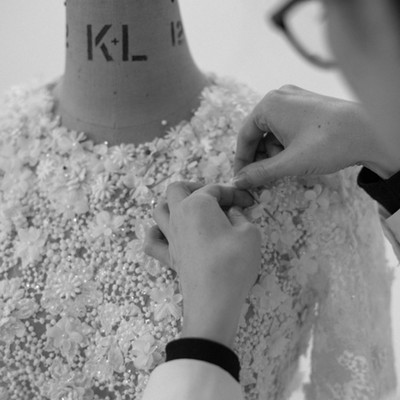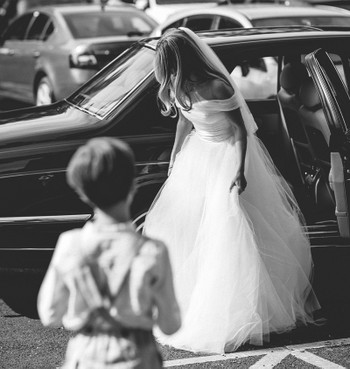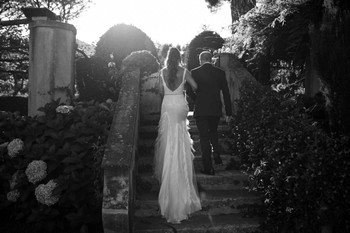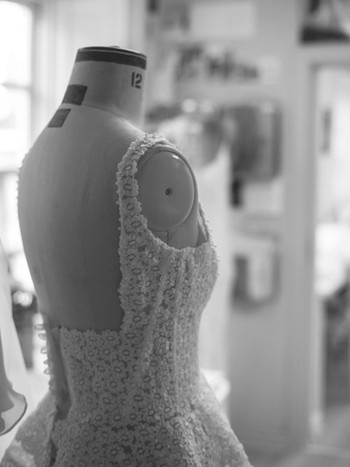
What You Need To Know About Bespoke Wedding Dresses
First of all, what exactly is a bespoke dress?
If you’ve got a specific vision in mind when it comes to your wedding dress, it's worth exploring the bespoke route. That way, you can create a truly original dress that can’t be found elsewhere. As designer Emma Beaumont explains: “The bespoke process involves a designer and bride working closely with each other to create a dream gown. Each dress is made to a bride’s individual measurements from a design that has been sketched as part of a collaborative process. There’s usually the option to design your own fabric, too.” As fellow designer Emma Victoria Payne adds, this is your chance to bring your vision to life and create something which will work well for the day you’ve planned. “There’s nothing quite like creating the ultimate one-of-a-kind dress. A bespoke gown will reflect the client’s personal style and can be a very special experience. You can also make it more practical – for instance, many of our brides have created interchangeable layers so they can take their look from day to night.”
So how does the design process work?
The process is very different to buying a standard dress and having it altered to fit. As Payne explains: “We arrange an initial appointment via Zoom or at the boutique to discuss their ideas. Then, we discuss where the wedding is taking place and any factors that need to be taken into account – for example the temperature, movement and setting. We discuss all the design details including the silhouette, neckline, sleeves and length of train. Each bespoke gown is developed through a series of sketches to develop the ideas.”
When it comes to fabric, Payne says this is something your designer will take care of. “We source suitable fabrics from our suppliers and gather samples for each client. The bride-to-be will also try on a range of dresses with similar silhouettes in the boutique, and drape silks to create necklines – plus, try on additional straps and sleeves to visualise the design. A full set of 40 measurements is taken and then we begin pattern cutting. We produce a toile in calico so she can try the design in cotton first and check if she's happy. We pin this to achieve a great fit before embarking on cutting the final silks. Once the paper pattern is updated with any changes, we cut the dress and construct it ready for fittings. We arrange three to five further fittings depending on the design to ensure a perfect fit and pin the final hemline with the client’s shoes. Towards the end of the process, we arrange a final try on and collection, which is usually a week before the wedding day.”
Why does a bespoke dress cost more?
“A bespoke dress takes more time and therefore costs more,” says Beaumont. “It is not a process that is rushed – every dress is hand-sewn. For example, here we use a hand-appliqué technique to create a unique pattern. During this process, in most cases, the bride is in her dress, and we pin each individual appliqué on – deciding on the placement together.” Payne adds: “The cost of each bespoke gown is calculated in relation to the fabrics and the labour involved. Sometimes a bespoke dress can be a similar cost to one of our own collection dresses, depending on the detail. If there is a great deal of embellishment and handwork involved, then the cost will be considerably more.”
However, it’s important to factor in the additional flexibility going bespoke can allow, says Beaumont. “When you have a bespoke dress, we start the process with a far longer timeline, so we can work to a bride’s fitness plan (if she has one). Having a bespoke dress generally means things are much more flexible, as we can add things along the way – such as an over-skirt or bigger sleeves – which a bride might suddenly decide she wants.”

Dress By Emma Victoria Payne | Photography Ben Wigglesworth

Dress By Emma Victoria Payne | Photography Faye Cornhill

Dress By Emma Victoria Payne | Photography Julian Kanz
Talk to us about choosing the fabric...
“Most bespoke designers will have an extensive range of fabric samples for you to look at during your first appointment, which will help you visualise how your finished dress will look,” says Beaumont. “Our range includes the very finest silk crêpes, satins, organza, georgettes, chiffons, textures and embroideries, as well as a huge variety of lace from all over the world. For bespoke or unique fabric requests, we recommend you contact us several weeks before your first appointment so we can make sure they're available on the day.”
Another benefit of being able to choose your fabrics when going bespoke is you’ll know exactly what you’ve chosen and how it will feel against your skin. Payne adds, “We love creating gowns using the highest quality silks. For bespoke, we often make slightly different shades of ivory, oyster, blush and champagne tones. We also have our own embroidery and embellishment team so we can produce unique fabrics that incorporate personal motifs. We create bespoke appliqué and the placement of each flower and leaf is chosen with the client during the dress fittings.”
What should you know before the first appointment?
“During your first consultation, not only should you meet the designer, you should also be introduced to a team of experienced seamstresses,” says Beaumont. “As well as discussing your dream wedding dress, we would also ask you to share the details of your day. This is really important so we can visualise the exact setting and make sure everything flows perfectly. To help inspire your own design, you should try on some of our collection dresses and study the craftsmanship behind each one. Together we then create a sketch of your dress and take your measurements. Provided you’re happy with that first sketch, an initial estimate of cost can be given.”
In terms of prep ahead of the appointment, Beaumont says it’s important to be aware of some basic beauty no-nos. “Fake tan, make-up and oil-based products may transfer during fittings and so these should be avoided for one or two days prior. Make sure you wear the correct underwear for each fitting, too. Wear the bra you intend to wear on your wedding day, and where possible, avoid padded styles. Seamless and nude underwear is the best. Shapewear should be worn from first to final fitting if that’s what you’re planning to wear on your wedding day. Although shoes aren’t essential, a rough estimate of heel height would be noted when you try on your toile.”

Emma Beaumont Atelier | Photography Vanitas Life

Emma Beaumont Atelier | Photography Vanitas Life
What does a toile fitting involve?
“This is the appointment where the sketch really comes to life,” says Beaumont. “You get to try on the toile, which is a complete replica of your dress made from cotton or a similar fabric. This acts as the base for alterations.” Even so, it’s important brides recognise that, sometimes, the toile fitting can be a little underwhelming, as you’ll only be trying on the bare bones of your dress. “For example, if you have opted for a heavily embellished gown, then it's highly likely you will try on just the lining,” explains Beaumont. “At this stage, it’s more about analysing the sleeve design and length, and to amend the neckline if needed. The hems of your dress will be left raw and, on most occasions, a fastening will not be inserted until your second fitting.”
How do things progress from here?
At the second fitting, work usually begins on the finishing touches to ensure the fit is perfect. “Our brides are all very different, and while some prefer to take a back seat, others choose to be more involved in the design process,” adds Beaumont. “Your final fitting would normally be held two to four weeks before your wedding day and this is where we carry out all the last-minute checks. It also gives the whole team an opportunity to analyse the dress and check it’s perfect on you.”

Vanitas Life
What happens if you change your mind?
“Bespoke gowns are constantly developed and tweaked,” says Payne. “It is incredibly difficult to decide on the exact details from a sketch, and part of the joy of having something bespoke is the ability to make changes. This is why we arrange plenty of appointments with our bespoke clients. We want to ensure all of our brides love their dresses.” Beaumont agrees: “If a bride changes her mind half-way through, we start again – as long as we have enough time. This is why we start with a toile and then, if needs must, we make a number of toiles so everything is tested and tried from sleeve shape to split height, neckline to how far down it will go – you name it, we test it. It’s why we only make the dress once the bride is happy with everything and the fit is perfect.”
Visit EmmaVictoriaPayne.com
Visit EmmaBeaumont.com
DISCLAIMER: We endeavour to always credit the correct original source of every image we use. If you think a credit may be incorrect, please contact us at info@sheerluxe.com.
